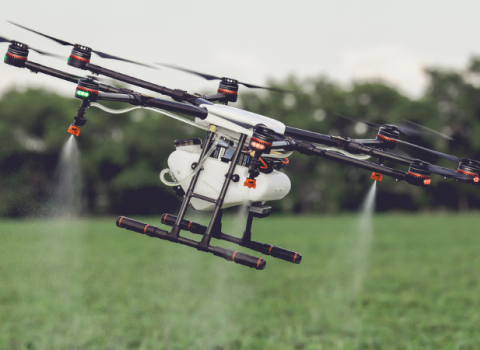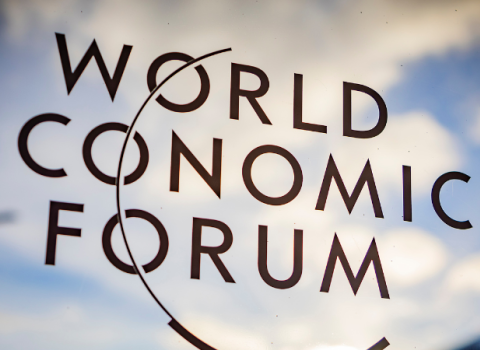
The report, based on 2006 figures, the last year for which complete worldwide statistics are available, shows that patents granted worldwide increased by 18 percent with some 727,000 patents granted in 2006. This increase in patents granted is due both to efforts by patent offices to reduce backlogs, as well as the substantial increase in the number of patents granted by China and Republic of Korea.
According to WIPO the total number of patents in force worldwide at the end of 2006 was approximately 6.1 million.
Director General of WIPO, Kamil Idris, said a major increase in innovative activity in China, South Korea and the US drove the overall growth of patent filings in 2006. “This reflects a consolidation of earlier trends which demonstrate a marked shift in innovation hubs around the world.”
He added, “While use of the patent system remains highly concentrated among a group of countries, statistics show an increasing level of patent activity in emerging countries. This is an encouraging trend.”
Growing Internationalisation of Patent Activity
While the statistics reveal patterns of concentration in patent activity, they also point to a growing tendency for applicants to file their applications in multiple countries. This trend towards increasing internationalisation of patent activity is demonstrated by the growth in international filings through the Patent Cooperation Treaty (PCT) and in non-resident patent filings.
Francis Gurry, WIPO Deputy Director General said, “The PCT is the most important route for international patent filings, with an estimated 49 percent of all international patent applications being filed through the PCT.”
The number of international patent filings submitted via the PCT in 2007 is estimated at 158,400, a 5.9 increase over the previous year. The US is by far the largest user of the PCT system, a multilateral agreement administered by WIPO, which provides a simplified method for international patent filing. In 2006, 33.6 percent of all PCT filings originated from the US, almost twice that of the next largest user, Japan, which accounted for 17.5 percent of all PCT. Mr. Gurry observed that emerging countries such as India, Brazil and Turkey are increasingly using the system to file international applications.
The proportion of worldwide patent filings by non-residents increased from 35.7 percent in 1995 to 43.6 percent in 2006. In addition, between 2005 and 2006, total non-resident patent filings increased by 7.4 percent in contrast to total resident filings which increased by 3.1 percent.
Non-resident filings originating from US applicants accounted for 21.9 percent of the total non-resident filings, followed by Japan with 21.7 percent and Germany with 10.8 percent. The combined share of worldwide non-resident patent filings by the eight largest countries of origin, the US, Japan, Germany, South Korea, France, the Netherlands, the UK and Switzerland, increased from 66 percent to 74 percent between 2000 and 2006.
The level of internationalisation varies across countries and economies. The share of non-resident patent filings is very high in the patent offices of Hong Kong, Israel, Mexico and Singapore, where more than 90 percent of total filings are submitted by non-resident applicants.
Patenting activity in emerging countries also increased in 2006. The patent offices of India, with 24,505 filings, Brazil with 24,505 and Mexico with 15,505 all received a large number of filings in 2006. For the majority of the reported emerging countries, non-resident applicants accounted for the largest share of total filings.
Trends in Patent Activity
The share of total worldwide patent applications submitted by applicants from the top 10 countries of origin, that is the countries in which applicants reside, increased from 82.4 percent in 2000 to 85.2 percent in 2006. Applicants from Japan at 514,047 applications, the US 390,815 applications, South Korea 172,709 applications, Germany 130,806 applications and China 128,850 applications, accounted for 76 percent of the total number of patent applications filed worldwide in 2006.
Significant growth in the number of patent applications filed domestically fuelled China’s share of total worldwide patent filings which rose from 1.8 percent to 7.3 percent from 2000-2006.
In terms of offices, in 2006, for the first time since 1963, the United States Patent and Trademark Office received the largest number of patent applications at 425,966, followed by the Japan Patent Office at 408,674. The patent office of China received 210,501 applications, while South Korea received 166,189, and the European Patent Office 135,231 filings.
Although the number of patent applications filed across the world has steadily increased, the rate of increase is below that observed for other economic indicators such as gross domestic product and trade. That said, R&D expenditure and volume of patent filings are highly correlated. Countries with a high level of R&D investment tend to have a higher number of patent filings per resident.
Patents Granted
Some 73 percent of the 727,000 patents granted across the world in 2006 were concentrated in a small number of countries of origin - Japan, the US, South Korea and Germany. Between 2000 and 2006, the number of patents granted to applicants from China and South Korea grew by an annual average of 26.5 percent and 23.2 percent respectively.
Applicants from Japan (approximately 1.6 million) and US (approximately 1.2 million) owned the bulk of the patents that were in force in 2006. Between 2004 and 2006, there was an 85 percent increase in the number of patents owned by applicants from Finland and a 47 percent increase in South Korean ownership.
More than half of the patents in force in 2006 were filed during the period 1997-2003. Many patents are not maintained for the full term of 20 years from filing typically because the cost of maintaining the patent exceeds the economic return on the related product or service. Maintenance fees are payable at intervals throughout the life of the patent. Only a minority of patents are maintained for the full term.
Technology Sectors
In 2005, the latest year for which technology data are available, the most intense patenting activity is evident in the following sectors: computer technology (144,594), telecommunications (116,770), and electrical machinery (121,350) technologies.
Between 2001 and 2005, patent filings in computer technology, optics, and semiconductors grew by 5.3 percent, 5.0 percent and 4.9 percent, a year, respectively. There was a modest increase in pharmaceuticals filings (1.7 percent) and a decrease in biotechnology filings (-2.7 percent).
Recent pressures on energy resources have boosted patenting activity in the energy sector, in particular in relation to thermal and photo solar energy, fuel cells and wind energy.
Applicants from Japan accounted for the largest number of applications in the fields of solar energy and fuel cells, whereas Germany and Japan were the top two countries of origin for wind energy technologies.
Patent Offices Workload
In 2006 major patent offices continued to be challenged by significant backlogs in applications to be processed. Gurry said that while the report underlines promising trends in the use of the patent system, “It also points to the need to find solutions to address the persistent backlogs in workload at many IP offices around the world.”
The number of patent applications pending examination at the USPTO rose to 1,051,502 in 2006. Similarly, in recent years the JPO has experienced a sharp rise in the number of pending applications with some 836,801 patent applications outstanding at the end of 2006.
This is largely due to the introduction of a reduced time limit for request for examination, from 7 years to 3 years, which is likely to increase the examination workload at the JPO for some years. The number of pending applications at other large patent offices, such as the European Patent Office, Germany and Canada is also significant.





 A unique international forum for public research organisations and companies to connect their external engagement with strategic interests around their R&D system.
A unique international forum for public research organisations and companies to connect their external engagement with strategic interests around their R&D system.